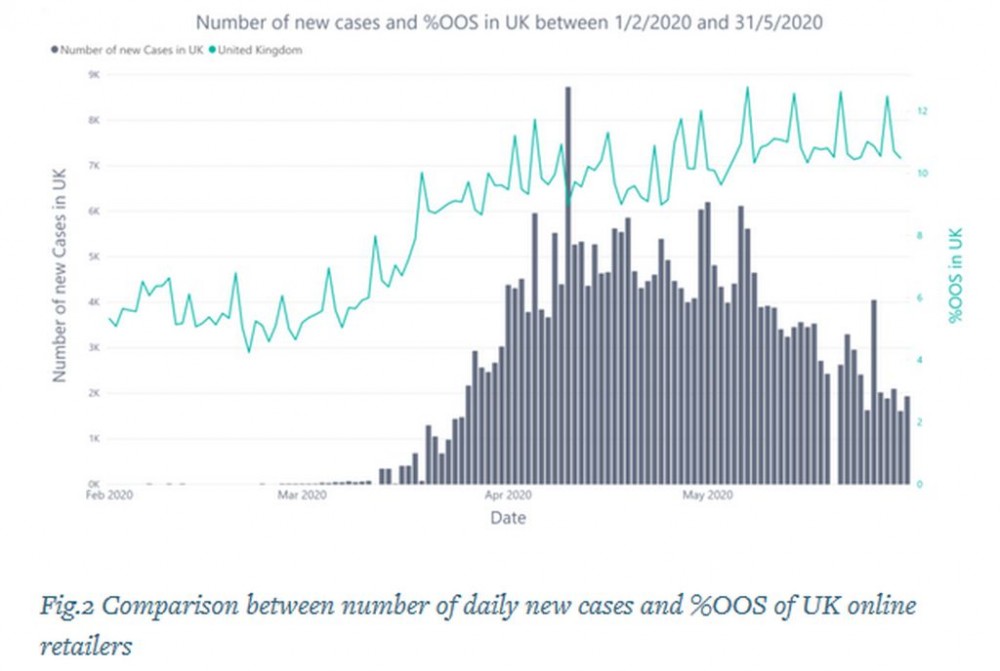According to Euromonitor International’s recently released COVID-19 themes, ‘the arrival of COVID-19 accelerates trends, such as the rise of online, click & collect, frictionless retail and D2C’. The pandemic has been a pressure test for e-commerce infrastructures, with some markets faring more resilient than others. To better diagnose what markets are more prepared for this ‘new normal’, it is important to discover if there is a causal relationship between the number of COVID-19 cases and online product availability to illustrate the level of preparedness of suppliers and online retailers.
Using our Price and Availability Tracker technology, we are able to measure total percentage out of stock (%OOS) across an online basket of essential consumer goods categories spanning 10 industries, including non-alcoholic drinks, packaged food, tissue and hygiene, consumer health, beauty and personal care and home care. For this analysis, we will examine how %OOS changes alongside changes in reported COVID-19 cases, with a 2-day lag to account for the reactive nature of consumer behaviour.
Overreliance on brick and mortar?
Take United Kingdom for example, the correlation value for UK is just above 0.8, which is considered a relatively high value. This implies that when COVID-19 reported cases rose, the %OOS similarly rose 2 days later. In other countries such as USA, Poland, Ireland and Denmark, %OOS is also highly correlated to the number of cases two days prior.

The factor in common for these countries is that they still rely significantly on brick and mortar retailers. According to Euromonitor Passport data, as of 2019, 80% of the retail sales are through store-based retailers in the UK, US and Poland, with Ireland reaching 90%. Since countries were in lockdown and social distancing practices have reduced abilities for consumers to shop in-store, consumers turned to online retailers. The e-commerce structure cannot restock quick enough to handle the sudden surge of demand, which lead to a high %OOS.

In early May, OOS% in the UK reached about 12% as reported COVID-19 cases surged, meaning 1 in 10 essential consumer products were out of stock. In Ireland, the ratio was even more extreme, with 1 in 5 essential consumer goods out of stock. The fundamental purchasing pattern of consumers is likely to remain after the pandemic settles, and these countries will have to improve their e-commerce infrastructure to adapt to the new consumption pattern.
Meeting new shopper needs
On the other end of the spectrum, there are...............................................................................................................................
The article is property of Euromonitor International, a market research provider, and can be read in full here.






























